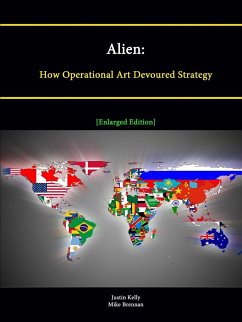The publication of the 1982 version of Army Field Manual (FM) 100-5, Operations, introduced to the English-speaking world the idea of an operational level of war encompassing the planning and conduct of campaigns and major operations. It was followed 3 years later by the introduction of the term "operational art" which was, in practice, the skillful management of the operational level of war. This conception of an identifiably separate level of war that defined the jurisdiction of the profession of arms was, for a number of historical and cultural reasons, attractive to U.S. practitioners and plausible to its English-speaking allies. As a result, it and its associated doctrine spread rapidly around the world. The authors argue that as warfare continues to diffuse across definitional and conceptual boundaries and as the close orchestration of all of the instruments of national power becomes even more important, the current conception of campaigns and operations becomes crippling.
Hinweis: Dieser Artikel kann nur an eine deutsche Lieferadresse ausgeliefert werden.
Hinweis: Dieser Artikel kann nur an eine deutsche Lieferadresse ausgeliefert werden.








